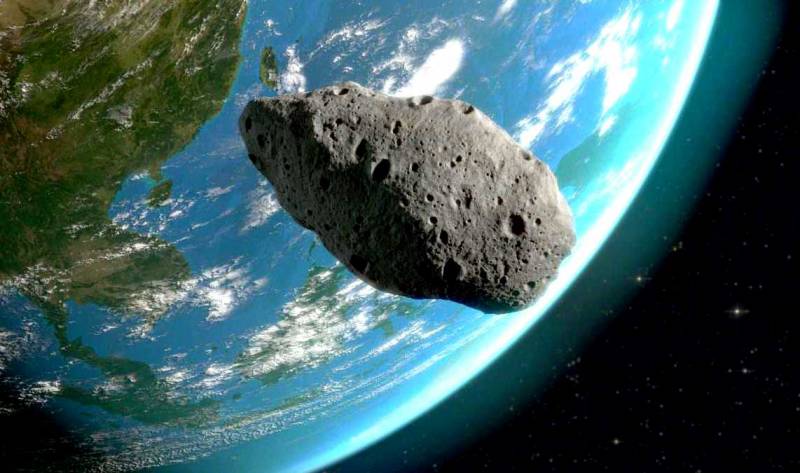In Russia, learned to destroy asteroids
The threat emanating from outer space in the form of meteorites falling on the ground is perceived more and more real every day. And if earlier giant craters on the Earth’s surface remained for people traces of something that happened a long time ago, or a very long time ago, then the fall of the relatively small (17 meters in diameter) Chelyabinsk meteorite in 2013 made many seriously think about protecting against such incidents. After all, “Chelyabinsk”, having fallen far enough from the inhabited places, with one of its spans in the sky above the city, caused serious damage to buildings and injured 2000 people. I would not want to imagine what the fall of such a body in the city can lead to, and even more so if the meteorite is many times larger.
It was this issue that scientists of Rosatom and their colleagues from the Moscow Institute of Physics and Technology (MIPT) were concerned about. In the laboratory, they created a model of a meteorite and destroyed it, using the existing ones Technology. To do this, they developed a technology for creating meteorite models, which takes into account a lot of data known to us, including their composition, density and porosity. The instrument of defense in the experiment were 3 laser units under the names "Iskra-5", "Ray" and "Saturn". The laser beam was modified proportionally to size, and during the experiments it was adjusted to the standard power for these models. A mini-meteorite fixed in a vacuum chamber was destroyed by a laser beam in less than 30 nanoseconds. At the same time, the fragments into which the meteorite crashed correspond to the size of the fragments of the same Chelyabinsk, of course, taking into account the scale.
According to scientists, breaking a meteorite with a diameter of 200 meters into pieces with a diameter of 10 times less and a thousand times less mass than himself, we will completely protect ourselves from potential damage that would cause a whole meteorite to fall. With larger meteorites, such a number will most likely not pass, however, this experiment proved that the impact of a short laser pulse on a meteorite causes destructive effects on its surface, comparable in power to nuclear explosions.
It was this issue that scientists of Rosatom and their colleagues from the Moscow Institute of Physics and Technology (MIPT) were concerned about. In the laboratory, they created a model of a meteorite and destroyed it, using the existing ones Technology. To do this, they developed a technology for creating meteorite models, which takes into account a lot of data known to us, including their composition, density and porosity. The instrument of defense in the experiment were 3 laser units under the names "Iskra-5", "Ray" and "Saturn". The laser beam was modified proportionally to size, and during the experiments it was adjusted to the standard power for these models. A mini-meteorite fixed in a vacuum chamber was destroyed by a laser beam in less than 30 nanoseconds. At the same time, the fragments into which the meteorite crashed correspond to the size of the fragments of the same Chelyabinsk, of course, taking into account the scale.
According to scientists, breaking a meteorite with a diameter of 200 meters into pieces with a diameter of 10 times less and a thousand times less mass than himself, we will completely protect ourselves from potential damage that would cause a whole meteorite to fall. With larger meteorites, such a number will most likely not pass, however, this experiment proved that the impact of a short laser pulse on a meteorite causes destructive effects on its surface, comparable in power to nuclear explosions.

Information